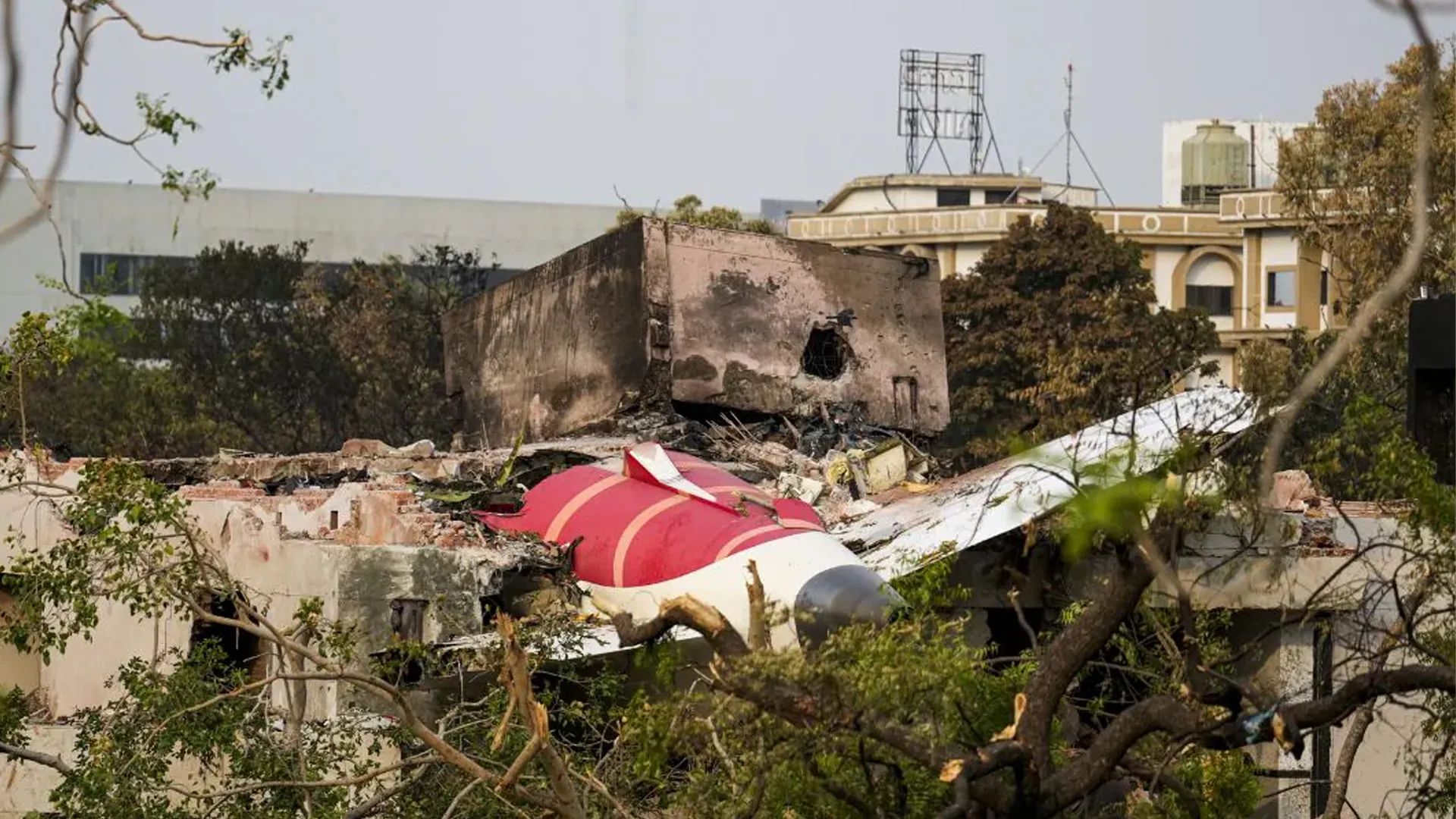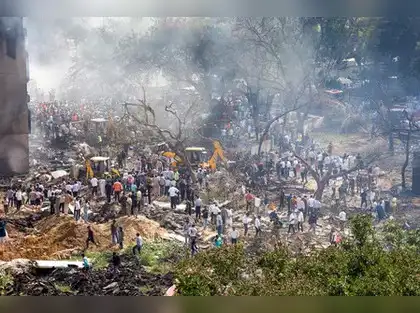Air India Pilots Recreate Boeing 787 Failure Scenarios to Understand What Went Wrong in the Tragic Crash

In the week following the tragic crash of Air India Flight AI-171 on June 12, which claimed the lives of 260 passengers and crew members, Air India has taken an unprecedented step to investigate the cause of the disaster. Three high-ranking Air India training pilots, all experienced in flying the airline’s Boeing 787 Dreamliner, took part in a series of flight simulations at Mumbai to understand what might have gone wrong in the critical moments after the aircraft took off from Ahmedabad.
The goal of the simulation was to recreate possible scenarios that could have contributed to the deadly crash. One of the primary focuses of the simulation was to test the theory of a dual-engine flameout and improper configuration during takeoff, two potential factors that may have led to the aircraft’s inability to climb after takeoff. These failures, if confirmed, could explain the rapid loss of altitude and the catastrophic crash just minutes after the aircraft became airborne.
THE SIMULATOR EXERCISE: RECREATING THE FAILURE SCENARIOS
The training pilots used state-of-the-art flight simulators to replicate the exact configuration of Air India Flight AI-171, which was operating a Boeing 787-9 Dreamliner. They focused on simulating failure modes that could cause a dual-engine flameout, such as electrical malfunctions or fuel system errors. The pilots tested various scenarios, including the loss of engine power shortly after takeoff, followed by attempts to recover and maintain altitude.
The team of pilots ran multiple simulations to examine how the aircraft would respond in the event of fuel system failures or engine malfunctions, mimicking the crucial moments immediately after departure. The goal was to determine whether the Boeing 787 could have experienced a simultaneous engine failure or whether human error or incorrect configuration played a role in the crash.
“We wanted to understand exactly what went wrong,” said Captain Raghav Verma, one of the training pilots involved in the simulation. “We focused on recreating the most likely failure scenarios based on the information available, and it was essential to see if the aircraft could have been saved if the engines had failed during takeoff.”
The results of these simulations have raised significant concerns. The pilots were able to recreate a dual-engine failure scenario that led to a loss of climb capability. Despite following standard recovery procedures, the aircraft in the simulation was unable to recover sufficient altitude and began to descend rapidly, ultimately resulting in a crash.
“In the simulations, the aircraft was very sluggish, and we were unable to recover it in time. Even after shutting off the engines and attempting to restart them, the aircraft struggled to maintain flight,” said Captain Verma.
POSSIBLE CAUSES: DUAL-ENGINE FLAMEOUT AND IMPROPER CONFIGURATION

The results of the flight simulator exercise have brought attention to the dual-engine flameout theory, which suggests that both engines may have simultaneously lost power due to a failure in the fuel system or electrical circuits. This scenario could have caused the aircraft to lose thrust shortly after takeoff, leaving the crew with limited options for recovery.
Additionally, the pilots in the simulation found that improper configuration during takeoff, including incorrect settings for the fuel switches, could have compounded the problem. If these systems were not set correctly before takeoff, it might have led to inefficient fuel delivery or engine failure.
“The Boeing 787 is designed to handle engine failures, but it requires precise configuration and understanding of how the aircraft’s systems interact during takeoff,” said Captain Vijay Sharma, another pilot involved in the simulator exercise. “A failure in both engines, combined with improper system settings, could easily lead to a disaster.”
While the dual-engine flameout theory is currently being taken seriously, there is still no definitive conclusion about what exactly caused AI-171 to crash. The findings from the flight simulators are being reviewed in conjunction with other data, including flight data recorder (FDR) and cockpit voice recorder (CVR) information, which will help clarify the sequence of events during the flight’s final moments.
THE INVESTIGATION: A DETAILED EXAMINATION OF THE BLACK BOXES
The Aircraft Accident Investigation Bureau (AAIB) has continued its investigation into the AI-171 crash, focusing on engine performance data, fuel system analysis, and cockpit communication. The black boxes, including the FDR and CVR, are central to understanding what transpired during the flight’s last few minutes.

Preliminary analysis of the CVR suggests confusion and urgency in the cockpit as the pilot and co-pilot attempted to address the engine failure. The pilots’ communication reveals their efforts to restart the engines and manage the loss of altitude, though they were ultimately unable to regain control in time.
“We’re still piecing together the full picture,” said Ravi Sood, an aviation analyst. “The flight data will give us a better idea of how the systems were performing, but the CVR already suggests that the crew was dealing with a critical failure that may have been compounded by the aircraft’s configuration.”
The AAIB is also focusing on maintenance records and pilot training to see if any procedural errors contributed to the crash. With two simultaneous engine failures, investigators are considering both mechanical failure and human error as contributing factors.
IMPACT ON AIR INDIA AND AVIATION SAFETY
The AI-171 crash has sent shockwaves through the aviation industry, raising concerns about the performance and safety of modern Boeing 787 aircraft. While the aircraft has an excellent safety record, the incident has prompted calls for more rigorous checks on fuel systems and engine performance, particularly after takeoff.
“This crash has highlighted vulnerabilities in the systems that we may have overlooked,” said Dr. Rekha Malhotra, an aviation safety expert. “We need to understand how such failures can happen, especially in such a new and technically advanced aircraft. The industry must take steps to ensure these types of failures do not repeat.”
For Air India, the crash has had far-reaching consequences, both in terms of public perception and regulatory scrutiny. The airline has vowed to cooperate fully with investigators and implement any necessary changes to improve pilot training and maintenance protocols.
“Our priority is to support the families affected by this tragedy and ensure that we learn everything we can from this event to improve our safety standards,” said Air India CEO, Pradeep Kumar.
CONCLUSION: STILL WAITING FOR FINAL ANSWERS
The AI-171 crash investigation is far from over. While the flight simulator findings have raised important questions about dual-engine flameout and improper configuration, the full report is still being compiled. Investigators will continue to analyze all available data, including the black boxes, to determine the exact cause of the crash.
“We are still waiting for the final investigation report, which will provide the most comprehensive analysis of this tragedy,” said Captain Sharma. “But the lessons learned from this incident will help make aviation safer moving forward.”
The investigation remains ongoing, and as authorities work to uncover the truth, the aviation community continues to monitor the situation closely.
📰 More Inside Today’s Edition:
THE AIR INDIA CRASH SIMULATION: How pilots are recreating the final moments of AI-171
MECHANICAL FAILURE IN MODERN AIRCRAFT: What the Boeing 787 crash teaches us about aviation systems
IMPROPER CONFIGURATION IN TAKEOFF: Understanding the risks of missetting flight systems
📸 EXCLUSIVE IMAGES OF AIR INDIA’S BOEING 787 AND SIMULATION EXERCISE — PAGE A6
The Aviation Daily — Where aviation safety meets investigative analysis.




